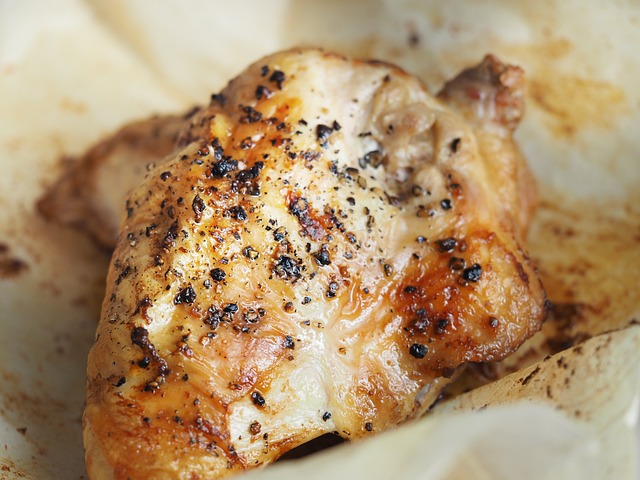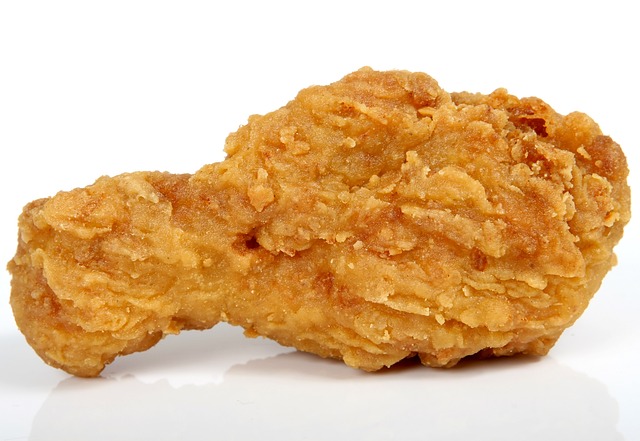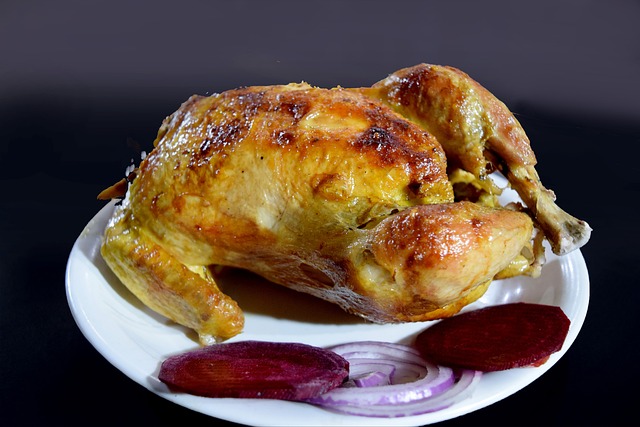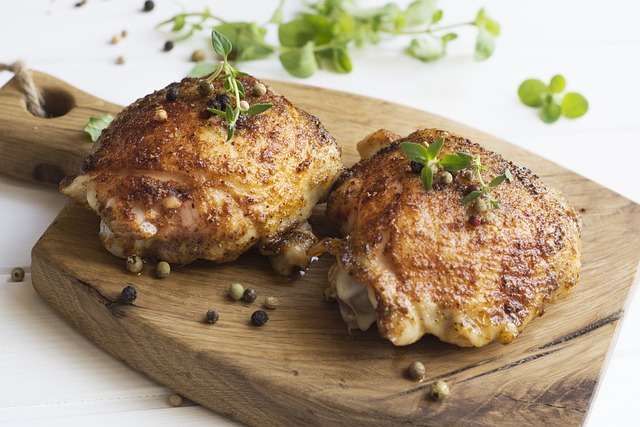When deciding whether you should bake chicken covered or uncovered, there are several factors to consider, such as the type of dish you’re making, the desired outcome, and your preferences.
Roasting chicken uncovered results in a crispy texture but requires monitoring to prevent overcooking which can dry out the chicken. Baking chicken covered retains its moisture, ensures even cooking, and locks in flavor.
Here’s a breakdown of the main factors to help you decide on the best method for your baked chicken recipe:
- Type of dish: If you’re making a dish that requires a creamy sauce or a moist and tender texture, such as a casserole or stew, baking chicken covered might be the better option. On the other hand, baking chicken uncovered would be more suitable if you’re aiming for a crispy skin and golden-brown finish.
- Desired outcome: Do you want a moist and tender chicken or a crispier skin? If you prefer the former, opt for baking your chicken covered. If the latter is your goal, leave the chicken uncovered during baking.
- Personal preferences: Ultimately, choosing between baking chicken covered or uncovered boils down to your preferences. Some people might prefer the moist, tender texture of covered chicken, while others might enjoy the crispy skin and golden-brown finish of uncovered chicken. Experiment with both methods to find your preferred cooking style.

Covered vs Uncovered – Pros & Cons
| Covered | Uncovered |
| Retains moisture Even cooking environment Locks in flavors Great for dishes with creamy sauces Can prevent burning | Crispy texture Requires monitoring Can dry out chicken Great for dishes with a crunchy top Can over-brown chicken |
Essential Tips for Roasting Chicken
Whether you choose to bake your chicken covered or uncovered, there are some essential tips to remember for achieving the best results. Here are a few pointers to help you perfect your baked chicken dishes:
Season Chicken Properly
Season your chicken generously with salt, black pepper, and preferred spices or herbs to ensure your baked chicken is flavorful and delicious. You can also marinate the chicken in a mixture of oil, lemon juice, and various seasonings for extra flavor, depending on your desired outcome.
Use a Meat Thermometer
Using a meat thermometer is crucial when baking chicken to ensure that it reaches the proper temperature and is cooked through. Insert the thermometer into the thickest part of the chicken while avoiding bones to get an accurate reading. Chicken should reach an internal temperature of 165°F (74°C) to be considered safe for consumption.
Let Chicken Rest Before Serving
Allowing your chicken to rest for a few minutes after removing it from the oven helps to redistribute the juices and ensure moist and tender meat. This is especially important for larger cuts of chicken or whole birds, as the resting period allows the meat to relax and reabsorb the juices.

Store Baked Chicken Properly
If you have leftover baked chicken, store it in an airtight container in the refrigerator to keep it fresh and prevent it from drying out. Properly stored leftover chicken can be safely consumed within 3-4 days.
Baking Chicken Pieces: Tips and Techniques
Baking chicken pieces, such as chicken breasts, thighs, and legs, can be a quick and easy way to prepare a delicious meal. Here are some tips and techniques to help you achieve the best results when baking chicken pieces:
Bake Chicken Pieces at the Right Temperature
Baking chicken pieces at the right temperature ensures they cook evenly and reach a safe internal temperature. Generally, chicken pieces should be baked at 375°F (190°C) for 20-45 minutes, depending on the size and thickness of the pieces.
Baste Chicken Pieces Periodically
To prevent chicken pieces from drying out during the baking process, baste them periodically with their own juices, a basting sauce, or olive oil. This will help keep the chicken moist and tender while adding extra flavor. Chicken breasts especially should be regularly basted.
Use a Roasting Pan or Baking Dish with a Rack
When baking chicken pieces, using a roasting pan or rack dish can help promote even cooking and prevent the chicken from sitting in its own juices.

Cover Chicken Pieces When Baking for Moisture Retention
Covering them when baking can be a great option if you prefer tender and moist chicken pieces. This is particularly true when you bake chicken breasts, as they can dry out quickly. You can use a lid, aluminum foil, or a baking sheet to cover pieces when baking. Ensure that the entire top of the chicken, including any exposed skin and sauces, is covered to maintain moisture and ensure even cooking. Remember that cooking times may need to be adjusted when baking the chicken covered, so monitor your chicken closely to avoid overcooking. It’s a sad day when you overcook chicken.
Bake Chicken Pieces Uncovered for a Crispy Skin
For those who prefer a crispy skin on their chicken pieces, baking them uncovered can yield the desired results. When baking chicken uncovered, adjust the cooking time accordingly to prevent overcooking and drying out the chicken. Basting the chicken pieces periodically with their own juices, a basting sauce, or olive oil will also help to keep them moist and flavorful. Remember to check the chicken’s internal temperature using a meat thermometer to ensure it is fully cooked and safe to eat.

Achieving Golden Brown and Crispy Skin
To achieve a nice dark golden brown and crispy skin on your chicken pieces, consider baking them at a slightly higher temperature, such as 400°F (204°C), for the first 10-15 minutes of cooking. Afterward, reduce the temperature to 375°F (190°C) to finish cooking the chicken. This initial blast of heat will help to crisp up the skin, while the lower temperature will prevent the chicken from overcooking.
Pro tip: To keep your chicken juicy when baking it uncovered, try brining it beforehand. Brining helps the chicken retain moisture, resulting in a tender and succulent final product. Give it a try next time you’re cooking chicken, and taste the difference for yourself!
Ingredients:
- 1 whole chicken
- 1 cup kosher salt
- 1/2 cup brown sugar
- 1 gallon cold water
- Optional: herbs, spices, and other flavorings of your choice
Instructions:
- In a large pot or container, mix together the salt, brown sugar, and any additional flavorings you’d like to use.
- Add the gallon of cold water and stir until the salt and sugar are completely dissolved.
- Add the whole chicken to the brine, making sure it is completely submerged.
- Cover the pot or container and refrigerate for at least 2 hours, or up to 24 hours for a more intense flavor.
- After brining, remove the chicken from the brine and rinse it thoroughly with cold water.
- Pat the chicken dry with paper towels and proceed with your chosen cooking method.
By brining your chicken, you’ll be able to achieve a juicier, more flavorful result, whether you’re cooking it covered or uncovered. Enjoy!
—
Cooking a Whole Chicken: Covered and Uncovered Strategies
When cooking a whole chicken, deciding whether to cook it covered or uncovered can greatly impact the final result. Both methods have their benefits and can create delicious, tender, and juicy chicken. This section will explore the strategies for cooking a whole chicken using both methods and provide tips to help you achieve the best results.
Cooking a Whole Chicken Covered: Juicy Perfection
Covering chicken while cooking can help retain moisture and create a juicy, tender bird. Here are some tips for successfully cooking a whole chicken covered:
Preheat the Oven and Prepare the Chicken
Preheat your oven to 375°F (190°C). Pat the chicken dry with paper towels and season it with herbs, spices, salt, and black pepper. You can add extra flavor by rubbing the chicken with softened butter or high-quality cooking oil.
Use a Roasting Pan with a Lid or Aluminum Foil
Place the seasoned chicken in a roasting pan with a lid or cover the chicken with aluminum foil. If using foil, ensure it is tightly sealed around the edges of the pan to lock in moisture and flavors.
Roast the Chicken Covered
Roast the covered chicken for approximately 1.5 hours or until the internal temperature reaches 165°F (74°C). Be sure to insert the thermometer into the thickest part of the chicken without touching the bone.
Uncover for Crispier Skin
If you want crispier skin on your covered chicken, remove the lid or foil during the last 15-20 minutes of cooking. This will allow the skin to be brown and crisp up while retaining moisture and flavor from the covered cooking method.

Cooking a Whole Chicken Uncovered: Crispy Skin and Golden-Brown Finish
For those who prefer a crispy skin and golden-brown finish, cooking a whole chicken uncovered can yield delicious results. Here are some tips for cooking a whole chicken uncovered.
Preheat the Oven and Prepare the Chicken
Preheat your oven to 425°F (220°C) for a crispier skin. Pat the chicken dry with paper towels and season it with your choice of herbs, spices, salt, and pepper. Rub the chicken with softened butter or a quality cooking oil for extra flavor and to help the skin crisp up during cooking.
Use a Roasting Pan with a Rack
Place the seasoned chicken on a rack in a roasting pan. Using a rack allows air to circulate around the chicken, promoting even cooking and crispier skin.
Roast the Chicken Uncovered
Roast the uncovered chicken for approximately 1 hour and 15 minutes, or until the internal temperature reaches 165°F (74°C).
Baste Regularly
To keep the chicken moist and flavorful while cooking uncovered, baste it every 20-30 minutes with its own juices, a basting sauce, or melted butter.
Cooking a whole chicken can be a delicious and satisfying culinary experience. Whether you choose to cook your chicken covered for a moist and tender bird or uncovered for a crispy skin and golden-brown finish, following the tips and strategies provided in this section will help you achieve mouthwatering results. Don’t be afraid to experiment with different cooking methods and seasonings to create the perfect whole chicken dish for you and your loved ones.
Juicier Chicken at Lower Temps
Cooking chicken at lower temperatures, such as 250°F to 325°F, can result in juicier and more evenly cooked meat compared to high temperatures. Lower temperatures reduce the risk of overcooking and burning the chicken while retaining moisture. It’s also more forgiving if you leave the chicken in the oven for too long. Experimenting with lower temperatures can yield tasty results, but ensure the chicken reaches a safe internal temperature of 165°F (74°C).
Chicken Cooking Times for Different Oven Temps
| Oven Temperature | Cooking Time per Pound |
|---|---|
| 250°F | 40-50 minutes |
| 275°F | 35-45 minutes |
| 300°F | 30-40 minutes |
| 325°F | 25-35 minutes |
| 350°F | 20-25 minutes |
| 375°F | 18-22 minutes |
| 400°F | 15-20 minutes |
Cooking Chicken Covered or Uncovered: Frequently Asked Questions
Here are some frequently asked questions related to cooking your chicken covered or uncovered:
How can I ensure tender meat when baking chicken uncovered?
To ensure tender meat when baking chicken uncovered, monitor the chicken closely during the cooking process and baste it periodically with its own juices, a basting sauce, or cooking oil. This will help to keep the chicken moist and tender.
What is the best method for cooking bone-in drumsticks or boneless thighs?
Bone-in drumsticks and boneless thighs can be cooked using the covered or uncovered method, depending on your desired outcome. If you prefer tender and moist chicken, cover chicken when baking. If you want a crispy skin, bake the chicken uncovered.
Can I use a baking sheet instead of a roasting pan for baking chicken pieces?
Yes, you can use a baking sheet for baking the chicken pieces. However, using a roasting pan or a baking dish with a rack is preferable, as it allows air to circulate around the chicken pieces and promotes even cooking.
How can I prevent overcooking chicken when baking uncovered?
To prevent overcooking chicken when baking uncovered, adjust the cooking time accordingly and monitor the chicken closely. Use a meat thermometer to check the chicken’s internal temperature and ensure it is fully cooked and safe to eat.
What should I do if the chicken starts to brown too quickly when I bake chicken uncovered?
If your chicken starts to brown too quickly when baking uncovered, tent it loosely with aluminum foil or cover it with a lid to slow down the browning process and prevent it from overcooking. Chicken breasts are notably prone to browning quickly.
Conclusion
In conclusion, the decision to bake your chicken covered or uncovered depends on the type of dish you’re making, your desired outcome, and your personal preferences. Covering chicken while baking helps to retain moisture and create a tender texture while baking it uncovered results in a crispy skin and golden-brown finish. By following the tips and guidelines in this article, you can achieve delicious chicken dishes using either method. Experiment with both cooking techniques and find the one that best suits your taste buds and culinary goals. Happy cooking!

